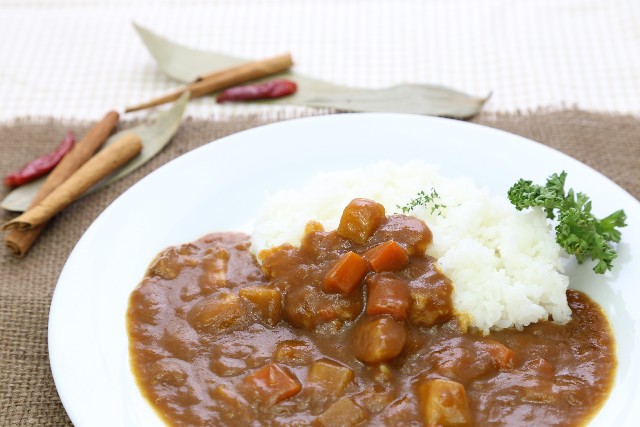Setting the taste buds on fire! How Curry spiced up Japanese cuisine
Be it hot or mild, the Japanese love their curry (known as karee) very much. It is certainly one of the most popular dishes across the nation. So what’s all the fuss about and how does it differ from other ethnic curries? We’ll look at how curry made its way to this country, how the people embraced it and transformed it into its own, unique mainstream culinary culture.
Origin And History
Curry was introduced by the British in the late nineteenth century when Japan was starting to open its door to the Western nations. The British, with their power over India as their colony at the time, brought in somewhat an Anglicized version of this Indian dish. The Imperial Japanese Navy followed the tradition of its British counterpart by serving curry to its servicemen as a staple food, a tradition of which is continued to this day by the naval branch of the Japan Self-Defense Forces. However, curry and rice was initially seen as a dish for wealthy gourmands among civilians but as the wave of Yoshoku (the reinvented, Japanese-style western cuisine) spread widely, it started to gain popularity for its exotic taste. The first curry powder was imported from Britain through the East India Company.
By the early twentieth century, Japanese from the elite society would gain a more authentic taste of curry. An Indian political refugee Rash Behari Borse married a daughter of a wealthy family who owned Nakamuraya Bakery in Tokyo. Borse introduced spice-based, Indian-style curry (as opposed to Anglo-Indian-style curry, using ready-blended curry powder) which became an instant hit at Nakamuraya. The flavor was refined to meet for the locals’ liking and this scrumptious Indian-Japanese curry is served at Nakamuraya’s restaurants to date.
With the increase of popularity and the shortage of supply in curry power, many Japanese manufacturers were attempting to recreate curry powder by merely adding cayenne pepper to the original ones imported from Europe, until Minejiro Yamazaki (the founder of S&B Foods) came up with the perfect blend of spices and introduced it to the market in the 1920s. The birth of S&B curry powder made curry more accessible to the public and contributed to positioning curry and rice as a firm favorite homemade meal.

Typical Japanese curry sauce is thick in its texture. By mid-1920s Japanese manufacturers would start combining curry powder with a thickening agent, making it easy to get the right consistency for the end result. This instant product is called curry roux, a French term for a thickening agent made of fat and flour. Curry roux comes in the form of neatly aligned blocks that almost resembles a large slab of chocolate. Today even novice chefs and young children would find it easy to cook a dish of Japanese-style curry, thanks to the invention of this convenient roux.
How To Cook Your Japanese Curry
From a world-renowned chef to your next door neighbor, almost all the Japanese have a thing or two to say about how they like their own curry sauce cooked. Historically, typical curry sauce had been cooked by the simple method of simmering caramelized onions, sautéed meat and vegetables with curry powder and stock. But just like western families have their secret family recipe for their gravy, the Japanese also like to give personal touch to their curry sauce by adding the likes of chili, grated apples, honey, miso, soy sauce, chocolates… or anything that works! In addition, some people would put so much time and effort into perfecting their curry sauce by, for example, chopping all the vegetables finely, grinding and blending spices from scratch, sautéing onions and marinating meat for hours, or even leaving the cooked curry sauce overnight.
Alternatively, some people may skip all the laborious procedures and resort to a retort curry – a pouch of ready-made curry that could be heated in boiling water or in a microwave oven. There are also various chains of fast-food curry shops. Both retort curry pouch and fast food curry eateries exemplify the hectic lifestyle Japanese people lead. Now that’s what we call curry in a hurry!
Variations
The conventional Japanese curry dish is curry rice (karee raisu), a dish with curry sauce served on a bed of cooked white rice with pickles or chutney as garnishes. Some people like to sprinkle grated cheese, finely chopped boiled eggs, or fried onions as toppings. Serving curry sauce and rice with katsu (a deep-fried sliced meat with breadcrumbs) is a calorie-fuelled comfort food which has now become popular abroad. You can see many financiers in smart suits buying and tucking into chicken katsu curry at lunchtime in the City of London.
There are many other ways to take Japanese curry, notably: curry udon and soba noodles (the latter being called karee nanban) and curry bread (karee pan). Both curry udon and soba are noodles served in bowls of curry sauce diluted with noodle broth. Curry breads are deep fried bread rolls filled with dense curry sauce, ideal for either meal or snack. There are also curry filled, steamed Chinese buns (Chuuka-man) available during the winter season.
Many curry flavored savory items can be found on store shelves too. Potato chips, corn snacks and rice crackers are very popular. Rumor has it that a confectioner in the western part of Japan is selling sweet mango cakes with curry and chutney fillings.
It’s been more than a century since curry was first brought into this nation, but the culinary hype is still going strong.
